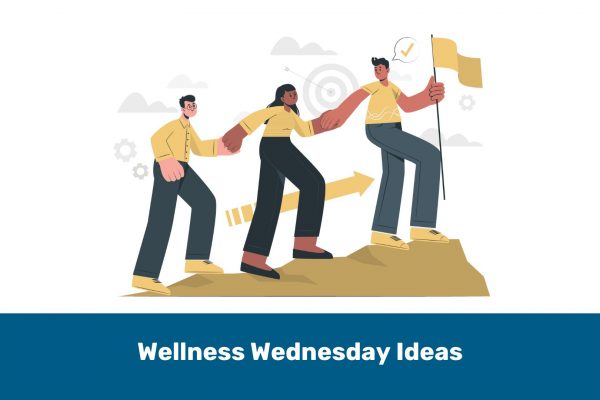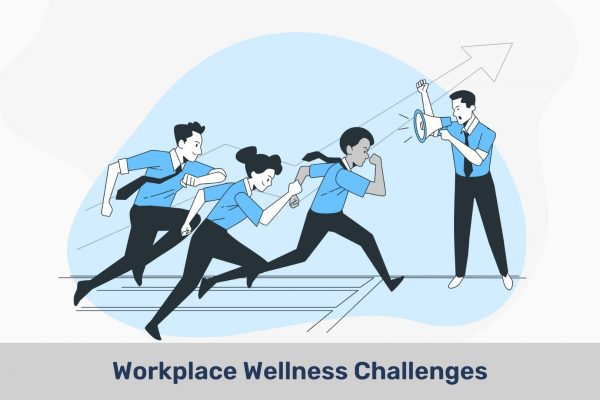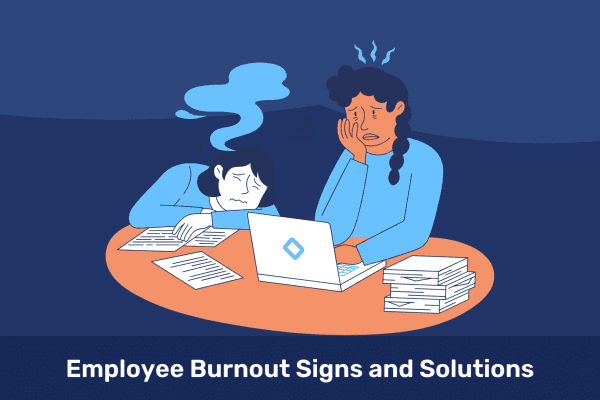Introduction
The modern workplace is a marvel of productivity—but it’s also a marvel of sedentary behavior. As one Forbes headline read, “Americans Sit More Than Anytime In History And It’s Literally Killing Us.”
Chronic sitting has directly led to an epidemic of obesity, which sets us up for a multitude of health problems including high blood pressure, high cholesterol, stroke, heart disease, type 2 diabetes, and damage to muscles, tendons, and ligaments.
People who are sedentary have twice the risk of developing cardiovascular disease compared to their active counterparts. Sitting also reduces blood flow to the brain, which slows brain function and can lead to poor cognition, anxiety, and depression.
Sedentary lifestyles are also expensive—both for employees and their employers. In addition to absenteeism, obesity leads to diminished productivity.
When you consider all the direct and indirect costs associated with a sedentary lifestyle, one thing becomes clear: effective weight-loss challenges at work are sorely needed. The good news is that they work.
One study that analyzed 11 studies over more than a decade found that the average participant lost 2–14 pounds compared to employees not involved in the program. “For people who participate in them, work-site-based programs do tend to result in weight loss,” explained researcher Michael Benedict, MD, from the University of Cincinnati College of Medicine.
The key is putting together an effective office weight loss challenge that takes into account your diverse workforce, including those who work in the office and those who work from home, as millions of Americans continue to do since the beginning of the Covid-19 pandemic.
What is an Office Weight Loss Challenge

An office weight loss challenge is a program designed to promote healthy habits and weight loss among employees in the workplace. The program typically involves a competition in which employees form teams and compete against each other to see who can lose the most weight within a specific timeframe.
The goal of an office weight loss challenge is to encourage employees to adopt healthier habits such as regular exercise and a balanced diet, which can lead to improved overall health and productivity. The challenge also promotes teamwork and camaraderie among employees, as they work together to achieve their weight loss goals.
Many office weight loss challenges offer incentives and rewards for teams that achieve their weight loss goals, such as cash prizes, fitness equipment, or company-sponsored events. These rewards can motivate employees to stay committed to their weight loss goals and provide a sense of accomplishment when they achieve success.
Overall, an office weight loss challenge can be an effective way to promote healthy habits and weight loss among employees in the workplace. By creating a supportive and competitive environment, employees can work together to improve their health and wellbeing, leading to improved morale and productivity in the workplace.
Read Further:
Creating a successful office step challenge
Steps for creating a Successful Office Weight Loss Challenge
1. Educate

Before you can implement an office weight-loss challenge, you need to educate your employees about the dangers associated with a sedentary lifestyle.
Circulate literature detailing the health problems associated with excess weight, strategies to counter them, and above all the message that the organization is here to help. Second, explain that the organization is going to take steps to actively help those who are trying to lose weight.
Many people are under the impression that the office is for working and wellness is for personal time. This might have been true in the old days, but the modern workplace understands that health and productivity are inextricably linked.
Simply put, when employees are happy and healthy, their work product increases dramatically. Everyone wins.
2. Make a Plan

After explaining the importance of weight management as it relates to health and productivity, you need to plan how you actually are going to implement your weight-loss challenge at work.
Don’t gloss over this stage—preparation is the single most important factor when it comes to executing workplace wellness challenges. A poorly planned weight-loss program lead to low participation every time.
First, consider structure. Will your weight-loss program be individual- or team-based? This will largely depend on how large your organization is. Team-based challenges can be divided based on department, floor, and so on, and for best results should include a diverse representation of employees at all levels of the organization. When implemented properly, team-based challenges offer the added benefit of motivation and morale-building.
Second, create your strategy. The simplest challenges might amount to a weigh-in at the beginning of the program and a weigh-in at the end, and it’s up to the employees to figure the rest out. More complex programs include weight-loss seminars, group fitness classes, wellness coaches, weekly check-ins, and so on.
Third, publicize the weight-loss challenge. Put up flyers, send company-wide emails, stick banners in the lounge, feature it prominently in the company newsletter. While everyone may not participate in the program, all employees should at the very least be aware of it.
3. Promote Body Positivity

A poorly put-together weight-loss challenge can have the negative effect of body shaming. Remember, a weight-loss program should be inclusive should never pressure anyone to participate who does not want to. Company-sponsored weight-loss programs must always be voluntary.
These challenges serve to promote comradery, not competition. Participants should also not be encouraged to share their weight and progress unless they want to. In addition, avoid encouraging strict calorie counting, which can promote unsustainable healthy habits.
Similarly, offering prizes for the person who loses the most weight can also incentivize unhealthy and unfriendly competitions. Remember, the goal of the program is to in still lifelong habits that lead to a healthy body weight, regardless of shape or size.
4. Establish Goals

What do you hope to get out of your company’s weight-loss program? Avoid goals tied to a specific weight-loss figure. Remember, your workforce is diverse, and each person has their own unique set of circumstances. Two employees of similar anatomy may have two entirely different goals. Joan may want to lose 5 pounds while Antonio wants to 50. Both are worthy and positive goals.
The overarching goal of your corporate weight-loss program should be to instill healthy habits that stick beyond the length of the challenge. If a program results in employees losing weight for a few months during the course of the challenge, only to gain it all back again, then you haven’t met your most important goal.
Likewise, achieving a healthy weight does not mean being as skinny as possible. It’s is critical that your messaging stay body-positive and take into account that ideal weight depends on a number of complex individual factors including genetics, lifestyle, and body competition. Weight is merely one indicator of a person’s overall health.
Ideally, your employees should consult with their health professional to determine what their healthy weight should be. If an employee chooses to participate the weight-loss challenge, they should do so under the supervision of their doctor.
5. Set Parameters

First and foremost, how long is your weight-loss program going to last? Programs that are only a few weeks long might encourage employees to lose too much weight too fast, which is unhealthy and unsustainable.
On the other hand, programs that are too long might fail to motivate employees to implement healthy habits in the near-term. Generally speaking, weight-loss programs the last between 2 and 3 months are the sweet spot, but many organizations find success with programs that last as long as 5 or 6 months.
Second, will your challenge have winners? This is a no-brainer for other wellness competitions, such as step challenges, but as discussed earlier, weight-loss is a much more sensitive initiative.
If you decide to include rewards and winners, avoid using absolute pounds lost as that may encourage unhealthy behavior. Instead, determine winners based on percentage of total weight loss.
To calculate, simply divide the amount of weight lost—either by team or by individual—by the initial weight. Using the percentage of weight lost will also be a more sensitive way of announcing a winner.
6. Provide Resources

Given that millions of Americans are still working from, there are limited ways for an organization to directly intervene in a weight-loss program. If your team is working from the office, consider initiatives like meatless Mondays and bike-to-work days.
When safe to do so, help your employees organize jogging groups, yoga classes, cycling clubs, and so on. On the nutrition side, stock vending machines with healthy snacks instead of junk food and soft drinks. Provide links to useful weight-loss resources.
The Woliba nutrition programs, for example, includes in-depth weight-loss journeys, from vegan to paleo. Check out the Woliba portal daily for tips on weight-loss challenge ideas.
For employees working from home, focus on nutrition. Encourage employees to cook one or more nutritious meals per day by posting links to healthy recipes, like the ones posted weekly on Woliba. Use tools like Zoom to sponsor cooking classes that will help employees extend their health success long after the challenge ends.
Also Read: Top 4 Benefits of Corporate Nutrition Programs
7. Finally—Make it Fun!

For weight-loss programs to succeed, they have to keep employees motivated and engaged. Simply announcing the challenge and letting participants fend for themselves isn’t going to cut it. Creating structure and metrics through gamification is a great way to keep employees engaged.
For example, one way to keep employees on track is to pick a target mileage, either for individuals or for teams. Make it a challenge to walk a certain amount of miles or steps per week.
Your wellness software can easily sync with the most popular step counters, including most smartphones, and teams or individuals that log the most miles can even compete for prizes. Finally, be sure to recognize employees who meet their weight-loss goals.
10 Exciting Office Weight Loss Challenge Ideas
-
- Step It Up Challenge: Encourage employees to increase their daily step count using pedometers or fitness trackers. Set a collective goal and reward teams or individuals who achieve the highest step count.
-
- Healthy Lunch Club: Encourage employees to bring healthy homemade lunches to work. Share nutritious recipes and organize weekly potluck lunches where participants can showcase their culinary skills.
-
- Stairway to Fitness: Encourage employees to take the stairs instead of elevators. Create a friendly competition to see who can climb the most flights of stairs in a designated period, with prizes for the winners.
-
- Fitness Class Frenzy: Arrange for fitness instructors to lead weekly exercise classes during lunch breaks or after work. Offer a variety of classes such as yoga, Zumba, or circuit training to cater to different preferences.
-
- Water Challenge: Encourage employees to increase their water intake by providing personalized water bottles and tracking their daily consumption. Set targets and reward participants who consistently meet or exceed their goals.
-
- Deskercise Challenge: Promote physical activity throughout the workday by sharing desk-friendly exercises and stretches. Encourage employees to take short exercise breaks and share their experiences or challenges.
-
- Healthy Snack Showdown: Encourage employees to bring healthy snacks to share with their colleagues. Host a tasting event where participants vote for the tastiest and most nutritious snack, promoting healthier snacking habits.
-
- Walking Meetings: Encourage employees to have walking meetings instead of sitting in conference rooms. Not only does it promote physical activity, but it also enhances creativity and productivity.
-
- Wellness Bingo: Create a wellness-themed bingo card with different healthy habits or activities. Employees can mark off squares as they complete each task, aiming to achieve a full line or a blackout. Offer incentives for completing the bingo card.
-
- The Biggest Loser Challenge: Organize a weight loss competition where employees can form teams and work together towards their weight loss goals. Provide resources, support, and regular check-ins to track progress and celebrate milestones.
Remember, it’s important to consider individual health and preferences when designing any workplace weight loss challenge. Encourage participation and provide support for employees at all fitness levels.
Conclusion
Losing weight is never easy, and we all deserve a pat on the back for pushing ourselves to adopt healthier habits while working full-time jobs.
Remember, we are all in this together. The efforts that your organization puts in collectively will in still positive health habits that persist long after the challenge ends.
Start a 30-Day Workplace Weight Loss Challenge with Woliba

Create a healthy and fit culture in your organization with Woliba. Transform your workplace into a healthier and more energetic environment with Woliba’s 30-Day Workplace Weight Loss Challenge!
Engage your colleagues in a fun and motivational program designed to promote fitness, nutrition, and overall well-being. With our expert guidance and resources, you can kickstart a journey towards healthier habits, increased productivity, and a happier team.
Join the challenge today and create a workplace where wellness thrives! Contact us now and start your group weight loss challenge.






